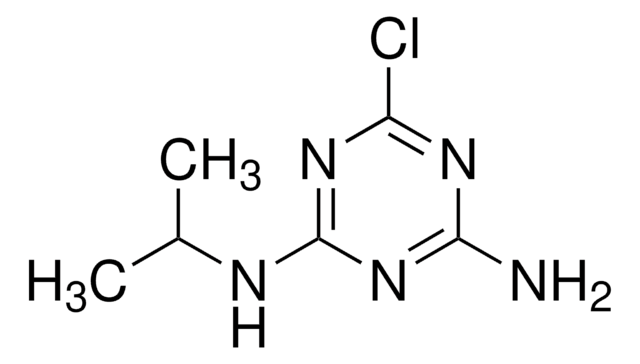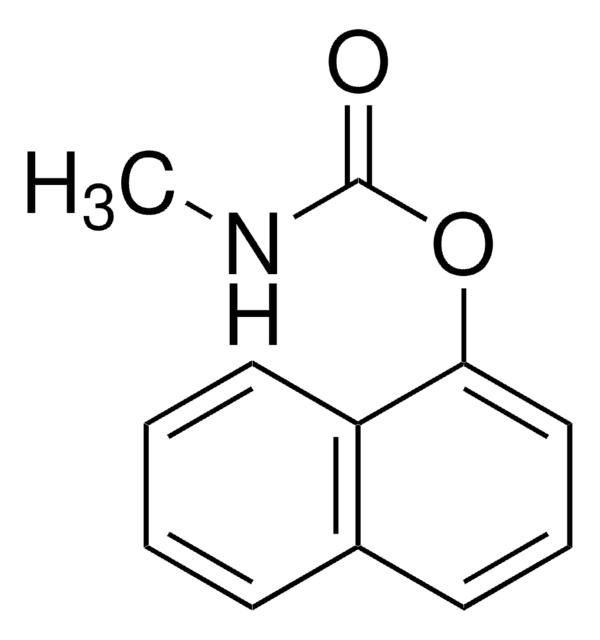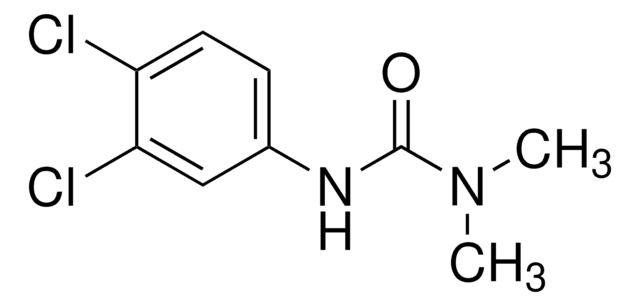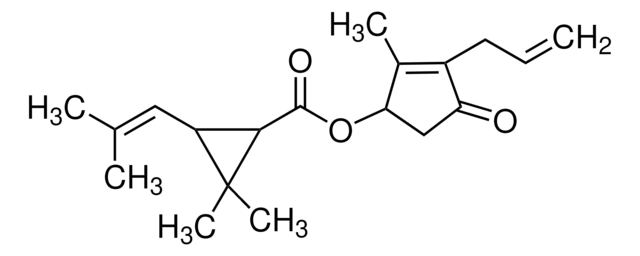おすすめの製品
グレード
analytical standard
品質水準
製品種目
PESTANAL®
シェルフライフ
limited shelf life, expiry date on the label
テクニック
HPLC: suitable
gas chromatography (GC): suitable
アプリケーション
agriculture
environmental
フォーマット
neat
SMILES記法
CCNc1nc(NC(C)C)nc(SC)n1
InChI
1S/C9H17N5S/c1-5-10-7-12-8(11-6(2)3)14-9(13-7)15-4/h6H,5H2,1-4H3,(H2,10,11,12,13,14)
InChI Key
RQVYBGPQFYCBGX-UHFFFAOYSA-N
類似した製品をお探しですか? 訪問 製品比較ガイド
アプリケーション
Refer to the product′s Certificate of Analysis for more information on a suitable instrument technique. Contact Technical Service for further support.
法的情報
PESTANAL is a registered trademark of Merck KGaA, Darmstadt, Germany
シグナルワード
Warning
危険有害性情報
危険有害性の分類
Acute Tox. 4 Oral - Aquatic Acute 1 - Aquatic Chronic 1
保管分類コード
13 - Non Combustible Solids
WGK
WGK 3
引火点(°F)
Not applicable
引火点(℃)
Not applicable
個人用保護具 (PPE)
dust mask type N95 (US), Eyeshields, Gloves
適用法令
試験研究用途を考慮した関連法令を主に挙げております。化学物質以外については、一部の情報のみ提供しています。 製品を安全かつ合法的に使用することは、使用者の義務です。最新情報により修正される場合があります。WEBの反映には時間を要することがあるため、適宜SDSをご参照ください。
労働安全衛生法名称等を表示すべき危険物及び有害物
名称等を表示すべき危険物及び有害物
労働安全衛生法名称等を通知すべき危険物及び有害物
名称等を通知すべき危険物及び有害物
この製品を見ている人はこちらもチェック
Nai-Yun Gao et al.
Journal of hazardous materials, 164(2-3), 640-645 (2008-10-01)
Ultraviolet (UV) irradiation (253.7nm) in the presence of hydrogen peroxide (H(2)O(2)) was used to decompose aqueous ametryn. The concentrations of ametryn were measured with time under various experiment conditions. The investigated factors included H(2)O(2) dosages, initial pH, initial ametryn concentrations
D Navaratna et al.
Water science and technology : a journal of the International Association on Water Pollution Research, 66(6), 1317-1324 (2012-07-26)
Agricultural discharge of herbicides to the Great Barrier Reef (GBR) poses significant threat to the marine ecosystem. This study evaluates the performance of a hybrid treatment system consists of a membrane bioreactor (MBR), UV disinfection unit and a granular activated
A R Koohpaei et al.
Journal of hazardous materials, 170(2-3), 1247-1255 (2009-07-04)
In recent years, there has been a significant increase in molecularly imprinted solid-phase extraction (MISPE) technique for the purification and clean-up of environmental samples. In this study, solid-phase extraction using the imprinted polymer has been optimized with the experimental design
Impact of herbicide Ametryn on microbial communities in mixed liquor of a membrane bioreactor (MBR).
Dimuth Navaratna et al.
Bioresource technology, 113, 181-190 (2012-01-11)
Ametryn, which is a second generation herbicide, was introduced to a lab-scale MBR at a concentration of 1mg/L and a 20-40% removal was observed at HRT ranging from 7.8 to 15.6h for an average influent Ametryn concentration of 0.8 mg/L.
Renato Grillo et al.
Journal of hazardous materials, 186(2-3), 1645-1651 (2011-01-11)
The purpose of this work was to develop a modified release system for the herbicide ametryn by encapsulating the active substance in biodegradable polymer microparticles produced using the polymers poly(hydroxybutyrate) (PHB) or poly(hydroxybutyrate-valerate) (PHBV), in order to both improve the
ライフサイエンス、有機合成、材料科学、クロマトグラフィー、分析など、あらゆる分野の研究に経験のあるメンバーがおります。.
製品に関するお問い合わせはこちら(テクニカルサービス)















